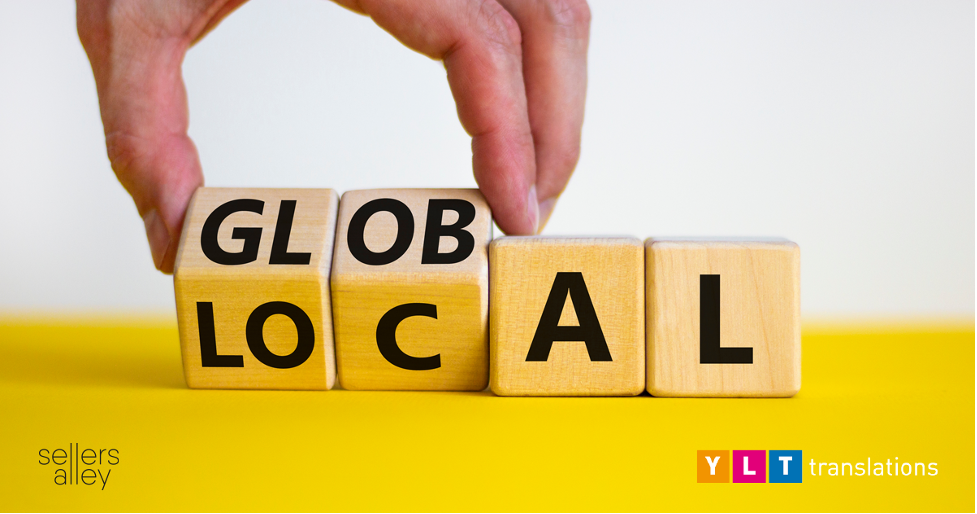When it comes to PPC in different marketplaces, it’s essential to understand that it doesn’t work the same way everywhere. One of the biggest mistakes people make when managing their PPC is not making enough effort to translate everything and optimize PPC for a different language. Thinking that it’s as simple as transferring your US campaigns to a German or French marketplace will leave you wondering why PPC isn’t working and why you don’t have the same results as in the US. Keep reading to learn more about localization and PPC, and make sure to take notes.
PPC and different marketplaces
One of the most common questions we get is, “Does PPC have to change per location?”
The answer is YES! PPC indeed needs to change, and that’s because of multiple factors.
They include keyword language, spoken languages in the marketplace, differences in bids between marketplaces, and niche popularity. Let’s take, for example, using English keywords in the Spanish market. 22% of Spain’s population speaks English, and a significantly lower percentage will search on Amazon ES in English.
It’s clear why you must translate and adapt keywords to a particular marketplace language.
You need to adjust bids as well, as they’re not the same across all Amazon marketplaces. Commonly, a highly competitive product in the US marketplace is a lot less competitive in some European markets, and the bids can be lower here.
Challenges in localization and PPC
One of the biggest challenges is correctly translating keywords from one language to another. Online translation services (Google Translate, Bing translator, etc.) are relatively fine, but they often don’t translate the terms correctly. You can end up with wrong words that won’t work when you use them in campaigns. That’s why we suggest collaborating with a suitable translation agency that will do a top-notch job on keywords and terms.
Another challenge is optimizing PPC, to be precise, doing keyword harvesting. If you don’t know what’s in front of you, it will be hard to do negative or positive harvesting. In that case, you’ll need to translate search terms. It can be difficult, but it’s doable. You can paste the search terms in a Google Sheet and use a formula to translate them into English. These translations will not be perfect, but they should give you a solid idea of what you’re working with.
Roadblocks that you might encounter
Below are some of the common mistakes that people make when dealing with localization and PPC.
- Not putting enough effort into translating their PPC
- Trying to save money by going cheaper and using less effective translation methods
- Optimizing blindly (without understanding what keywords or search terms they’re optimizing)
- Dealing with different currencies (wrongly converting from the US dollars to euros, etc.)
For example, each marketplace has its currency but no symbol for that currency. The CPC’s sign is $, creating confusion about whether the CPC is actually in $ (USD) or the local currency. The answer is the local currency, and the Amazon platform just uses the $.
You may encounter another difficulty when doing bid optimization on EU marketplaces via bulk. Here you need to swap commas with dots for the bulk to work correctly. A long time ago, we had a difficult time figuring this out. We spent hours figuring out why bulk didn’t work, to finally discover it was the comma.
Last but not least are the troubles a poorly translated product listing can bring. A great product can have great sales in the US. But, it can be a big failure in Germany because the listing isn’t translated and has a huge bounce rate.
Useful tips and tricks
These valuable tips and tricks are guaranteed to help you while working on localization and PPC!
- Get a high-quality translation of your English keywords and search terms before creating campaigns in different languages for different marketplaces
- Make sure you calculate the currencies correctly to avoid confusion and prevent spending too much or underspending
- Don’t adjust the bids blindly without knowing the meaning of a keyword
- Translate search terms before keyword harvesting
- Use Helium10 to get more keywords
- Localize your product listings correctly to get the best possible product rank
Client success story
One of our clients had an extremely successful and unique product in the US marketplace, making many sales. When we started working together, they gave us the US marketplace for optimization. While the US one was growing, the European ones weren’t. We finally agreed to take the EU markets over and see what we could do. The things we saw were interesting as there was unused potential.
Most of the keywords were in English with low impressions and clicks, and there were a few localized keywords. We suggested that keywords translation and listing optimization were necessary, as almost everything was in English. The next step was to launch new campaigns with translated keywords. In just a month, their sales skyrocketed, and our client was making a profit! We couldn’t have used Helium10 here as no similar products were being sold in the EU.
Conclusion
The next time you’re working on an EU marketplace PPC advertising strategy, think about this blog and what you can do to improve your sales and make an impact. It all comes down to a correct optimization of listings and precise translations of keywords and search terms.
Our advice is to invest in your listings and PPC translations and hire a translation agency such as YLT translations for this task! Save time and energy to focus on your business, and leave it to the PPC specialists from Sellers Alley to handle localization and PPC for you. You’ll get better and faster results, and your investments will pay off!
About the author
David Radović is a Senior PPC Specialist at Sellers Alley with over four years of experience in Amazon PPC, Google Ads, Facebook Ads, and as of last year, TikTok advertising. He has been a big part of Sellers Alley’s growth. David has managed multiple seven-figure sellers’ accounts, including developing business and marketing strategies, resulting in scaling clients’ businesses.

